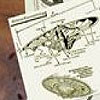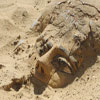Lost Explorers Of Ancient Mysteries
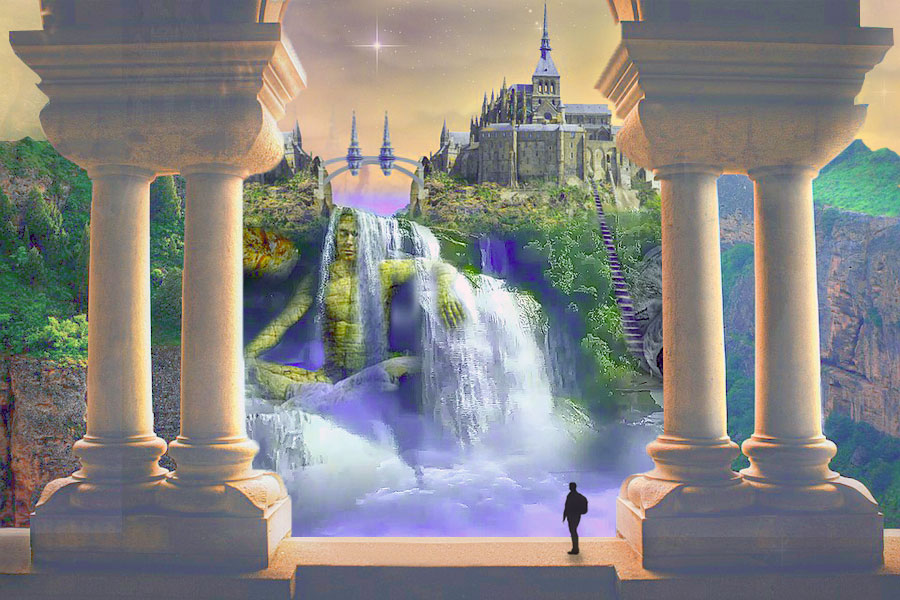 by Max Igan
by Max Igan
A Lost Frontier
Our journey now moves to the vast areas of rain forest nestled in the northern reaches of South America. The jungles of the Andes are an environment that can be likened to no where else on earth and high in the jagged mountains in areas such as the Matto Grosso region of Brazil (fig.59a.) the jungle is some of the most dense and unforgiving in the world (fig.59b.)
The great explorer Percy Fawcett had called the area “The Roof of the World” and he was right. High in the heavily wooded mountains, even still, there are no towns, roads or known inhabitations of any kind as far as can be seen, just a continuous undulating blanket of dense green jungle, broken occasionally by jagged mountain peaks crumbling skyward and snaking rivers that team with piranha and huge crocodilian. The thick jungle in between them is populated by countless species of insect, enormous spiders, monkeys and other more terrifying predators: Black Panthers and giant anacondas, the largest and most feared snakes in the world. It is a place where the moist forest air itself is alive with all manner of hidden and still yet unknown compounds. Primitive tribes still live in these remote areas and it’s possible that some areas may yet be inhabited by other tribes that are even still unknown.
When the intrepid Fawcett had gone missing in the area in 1925, every major metropolitan newspaper in the entire world had announced: “The disappearance of the expedition organized by Colonel Percy Harrison Fawcett in the mysterious region of Matto Grosso, in the heart of Brazil in search of ‘THE LOST CITY!’”
Colonel Fawcett was certainly not the first to venture into the wilds of the South American Jungles, nor the last. He is however, if not one of the most famous, undoubtedly the most daring and his story is almost certainly one of the most intriguing. The diaries of Percy Fawcett have inspired many a Hollywood Movie pertaining to ‘Lost Worlds’ and mysterious jungle treasures.
Fawcett’s’ Tale
Colonel Percy Fawcett (fig.60) had been a retired official of the British Army, a veteran fighter of the Boer Wars in India during the late 1800’s, an explorer of outstanding reputation and considered by his peers to be an expert bushman in any class of forests or other rugged terrains.
In 1906 he was requested by the British government to survey the borders between the countries of Bolivia and Brazil.
At the time both the Brazilian and Bolivian Governments had wanted their borders properly defined once and for all in order to quell the constantly erupting border disputes they were experiencing, disputes they were afraid would soon lead to open war between their two countries. Of course, and in true political fashion, neither country had trusted the other to do the job fairly so eventually both countries agreed that only a neutral party could suffice for the task. The Royal Geographic Society of Britain had then recommended Fawcett for the job. Fawcett had agreed and traveling by canoe and foot over roughly an 18 month period in 1906-07, he surveyed and mapped the borders of the two countries using a compass and a sextant, a staggering feat given the conditions he faced and the terrain he covered.
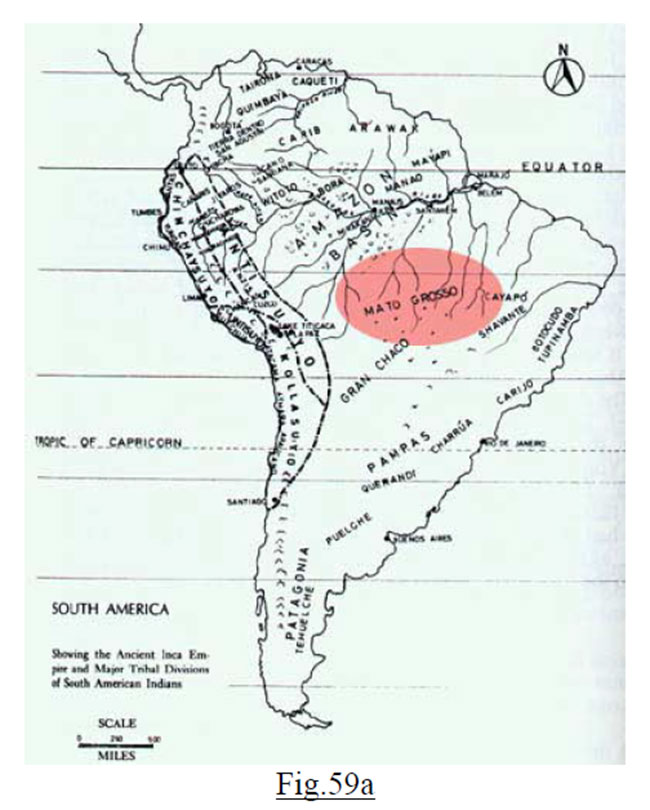 During the four year period from 1908 to 1912 he had then continued further, also successfully surveying the boundary of Paraguay and the border between Peru and Brazil. Then Fawcett’s mind began to turn toward the undertaking of various explorations in the region. Finally, when embarking upon a new expedition from a place deep in the Brazilian Jungle that he had named “Dead Horse Camp”, he wrote his last letter to his wife on the 29th of May, 1925.
During the four year period from 1908 to 1912 he had then continued further, also successfully surveying the boundary of Paraguay and the border between Peru and Brazil. Then Fawcett’s mind began to turn toward the undertaking of various explorations in the region. Finally, when embarking upon a new expedition from a place deep in the Brazilian Jungle that he had named “Dead Horse Camp”, he wrote his last letter to his wife on the 29th of May, 1925.
In the letter he said this to her:
“Our route will be from Dead Horse Camp, 11° 43′ south and 54° 35′ west, where my horse died in 1921, roughly northeast to the Xingu, visiting on the way an ancient stone tower which is the terror of the surrounding Indians, as at night it is lighted from door and windows. If we do not return, I desire not that you organize any rescue game… It is too dangerous. For if I, with all my experience, fail, then not much hope is left in the triumph of others and I would not encourage such an attempt. That is one of the reasons of why I do not say exactly where we go… one thing is doubtless: the answer to this enigma and perhaps to the prehistoric world… it will be found when these old cities have been located and are open to scientific research. BECAUSE the CITIES EXIST… of THAT I AM CERTAIN…..…You need have no fear of failure.”
And those were the last words that anyone ever heard from him.
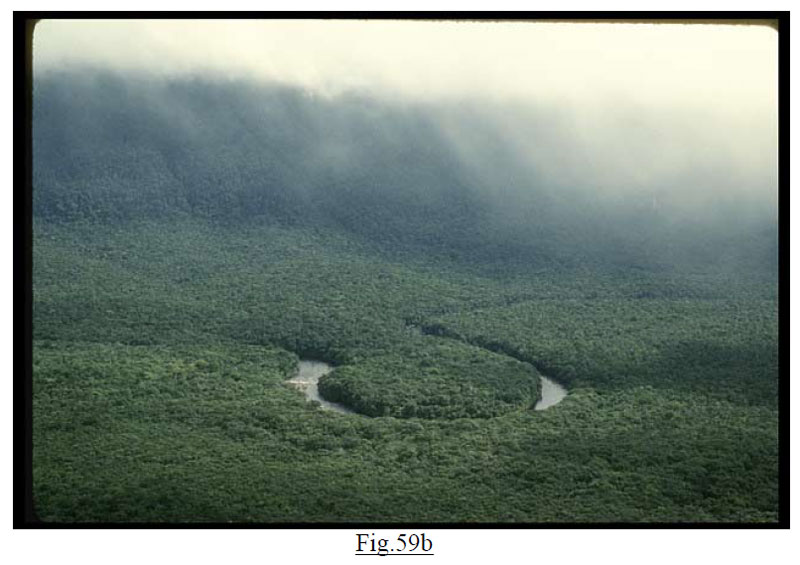 Fawcett entrusted the letter to one of three assistants who had helped the expedition thus far having told them that he no longer required their services. He had commented that a smaller group would look less like an invasion to the Indians and therefore be less likely to be attacked, an attitude that had in fact, always been his policy. He said to his assistants that the route was carefully planned. He then disappeared into the jungle, taking with him, his eldest son Jack and another man, who was a close friend of Jacks. None of them were ever seen or heard of again. Fawcett had been 58 years old at the time.
Fawcett entrusted the letter to one of three assistants who had helped the expedition thus far having told them that he no longer required their services. He had commented that a smaller group would look less like an invasion to the Indians and therefore be less likely to be attacked, an attitude that had in fact, always been his policy. He said to his assistants that the route was carefully planned. He then disappeared into the jungle, taking with him, his eldest son Jack and another man, who was a close friend of Jacks. None of them were ever seen or heard of again. Fawcett had been 58 years old at the time.
Despite his wishes, several rescue missions were actually undertaken in an effort to discover what had become of Fawcett, some fraught with disaster and all without success. There were also several, reported sightings by various persons of a man matching Fawcett’s description, though none of these reports were ever confirmed. Rumors still abound concerning his disappearance. Some have said they saw him living with a native tribe attending his son who had become too ill to travel; some claim to have seen him wandering lost and crazed in the Jungle, still searching; one claimed that he had been captured by headhunters and that he had even seen a shrunken head resembling Fawcett. It has even been speculated that he actually found his lost city of gold but that it was still inhabited and he was never allowed to leave.
The diaries of Percy Fawcett were later published in a highly informative book entitled Exploration Fawcett, later re-released as Lost Cities, Lost Trails. I highly recommend reading these factual accounts of one of the truly great explorers if the book can still be found. To this day, no one has yet fully explored the Matto Grosso region of Peru and it still remains an area shrouded in Legend and Mystery (fig.61).
The intriguing story of Colonel Fawcett and his search for the Lost Cities he was so sure existed is one that could fill many books on its own. It began with a tantalizing tale Fawcett had heard regarding a man named Diego Alvarez.
Alvarez had been a Portuguese mariner who had apparently reached South American shores a few years after the discovery of the American continent after being shipwrecked. He had struggled ashore in Peru and then began a life filled with everything you would find in a good adventure story. The tale he tells is one of survival in the savage jungles, capture by cannibals, bold escapes and daring adventures in fabulously rich gold and silver mines fiercely guarded by hostile Indians deep in the thick jungles. Alvarez named the place as ‘The Lost Mines of Muribeca’.
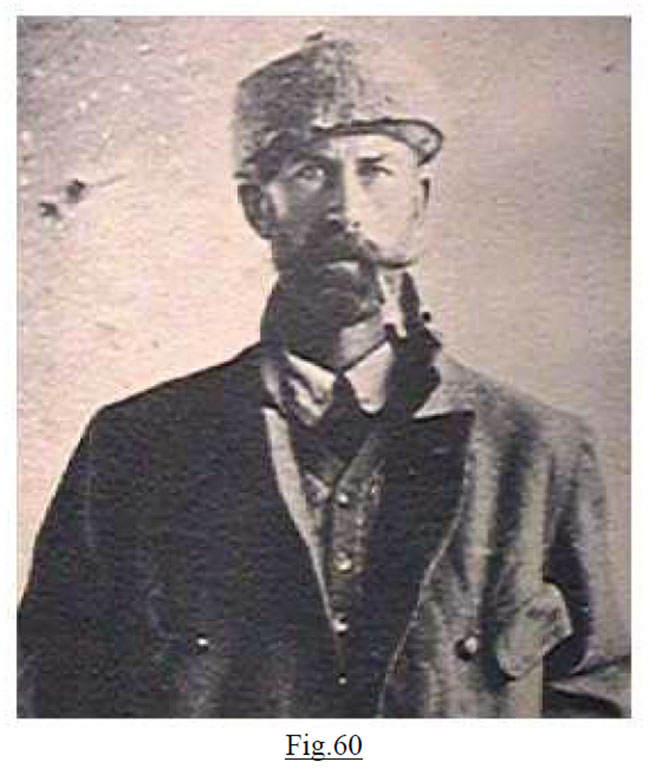 Fawcett is reported to have found an old document in Rio de Janeiro, dated 1753, that spoke of Alvarez and tells of how another man, of seemly unknown origin, whom Fawcett names only as Francisco Raposo, – “I must identify him by some name” had at that time decided to make an attempt to find the rich mines Alvarez had spoken of, only according to Raposo, he had discovered no such mines. Instead after climbing a narrow pass up a difficult mountain he and his men had found, hidden deep in the Amazon: “at their feet, about four miles away, a huge city.”
Fawcett is reported to have found an old document in Rio de Janeiro, dated 1753, that spoke of Alvarez and tells of how another man, of seemly unknown origin, whom Fawcett names only as Francisco Raposo, – “I must identify him by some name” had at that time decided to make an attempt to find the rich mines Alvarez had spoken of, only according to Raposo, he had discovered no such mines. Instead after climbing a narrow pass up a difficult mountain he and his men had found, hidden deep in the Amazon: “at their feet, about four miles away, a huge city.”
Rapsoso said this ancient and now uninhabited city was located in an area known as the ‘Serra do Roncador’ (Snorer or Bluster’s Mountain) near the Rio Xingu, in northeast Brazil. Raposo described the City as being very large and showing evidence of once being inhabited by a “highly civilized people.” He mentioned a city square, many cyclopean ruins, buildings still partially roofed with stone slabs, stone archways, columns, and statues. Many of Raposos description are quite detailed and also sound strikingly familiar to other Mayan ruins that have since been located that he could have obviously known nothing about in 1753 giving a great deal of credibility to the story and also going a long way re-enforce Fawcett’s tale of his still yet to be rediscovered ‘Lost City’. A city Fawcett referred to only as “Z.”
Sometime later Fawcett himself also came to own a most unusual stone idol bearing some curious inscriptions in an unknown language that have still yet to be translated. He said the idol generated an electric current that traveled up the arm of the person who was holding it. He eventually came to believe that this idol was connected to the lost cities he sought, cities he also firmly believed to somehow have a connection to the legendary land of Atlantis. He describes the idol in his book:
“I have in my possession an image about ten inches high, carved from a piece of black basalt. It represents a figure with a plaque on its chest inscribed with a number of characters, and about its ankle a band similarly inscribed. It was given to me by Sir H. Rider Haggard, who obtained it from Brazil and I firmly believe that it came from one of these lost cities.
“There is a peculiar property in this stone image to be felt by all who hold it their hands. It is as though an electric current were flowing up ones arm, and so strong is it that some people have been forced to lay it down. Why this should be I don’t know. Experts at the British Museum were unable to tell me anything about the idol’s origin.”
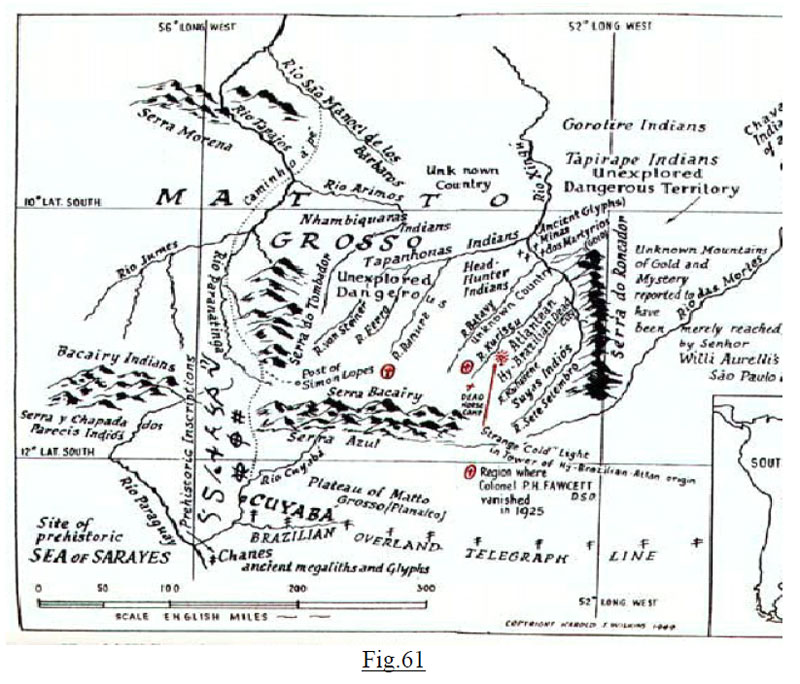 The black basalt image Fawcett spoke of is still a source of wonder and debate (fig.62). As of yet both the writing that appears on the plaque the character is holding and the writing on the ankle bands has not been deciphered (fig.63).
The black basalt image Fawcett spoke of is still a source of wonder and debate (fig.62). As of yet both the writing that appears on the plaque the character is holding and the writing on the ankle bands has not been deciphered (fig.63).
I would be more than happy to hear from anyone who may be familiar with this language or has found anything similar in another location.
In the course of his extensive and very well documented explorations Fawcett discovered many other strange and unusual things. On one of his South American journeys he lived among a tribe of white Indians known as the ‘Tapuyas,’ describing them as follows: “The Tapuya tribe are as fair as the English and they have hands and feet that are small and delicate.” His book also tells of another Amazonian tribe who were red haired and also fair skinned.
On one expedition local Indians told him of a cave filled with markings or petroglyphs in an unknown language that exist at Villa Rica and he heard many more stories about lost cities deep in the jungle. One tale in particular, a story recorded in manuscript form by Jesuit missionaries in the 1700’s, told that in the jungles of Cuyaba, Brazil, somewhere in the Matto Grosso region, there are apparently strange bright lights that shed no heat, which the Indians say, have burned continually and quite unattended for many generations and still burn today in the ruins of now uninhabited and long dead cities. Fawcett claims to have also once seen these lights from a distance himself. It is rumored by some that just such an eternal, cold light energy has also been found in ancient Roman and Egyptian tombs and in areas of Tibet and India though I am unable to confirm these rumors. The production of such an eternal cold light source is beyond our current level of technology and still remains a puzzle to modern science.
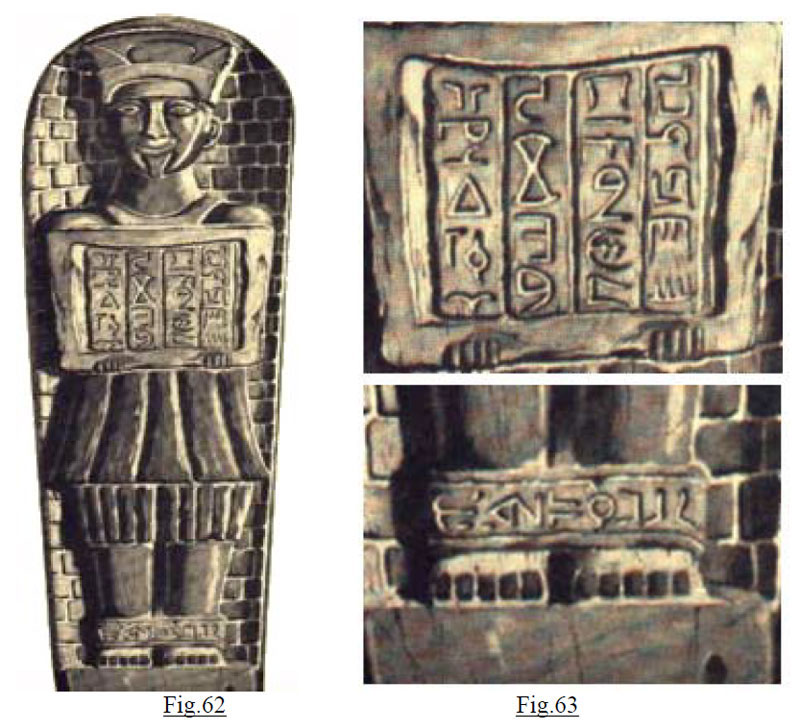 Colonel Fawcett had first heard these strange stories some time after he had accepted his first survey contract. Until he had known of them, his South American expeditions were completely oriented toward civil and engineering work though even while performing his daily tasks he continued to nurture a keen interest in the forest. During his surveys he also made copious amounts of notes containing detailed observations about everything he saw, especially the ways of the white settlers, the Indians of the forest, and the forest wildlife all of which are recorded in detail in his book. However after Fawcett became familiar with the story of Francisco Raposo his attentions and interests began to shift away from just pure engineering and more toward ventures of exploration and discovery.
Colonel Fawcett had first heard these strange stories some time after he had accepted his first survey contract. Until he had known of them, his South American expeditions were completely oriented toward civil and engineering work though even while performing his daily tasks he continued to nurture a keen interest in the forest. During his surveys he also made copious amounts of notes containing detailed observations about everything he saw, especially the ways of the white settlers, the Indians of the forest, and the forest wildlife all of which are recorded in detail in his book. However after Fawcett became familiar with the story of Francisco Raposo his attentions and interests began to shift away from just pure engineering and more toward ventures of exploration and discovery.
In one place in his diaries he records a remarkable conversation with another explorer concerning an unusual forest bird that nests in perfect round holes in rock cliffs. The man had actually spent 25 years living in the forests with the local natives and he had this to say:
“They make the holes themselves. I’ve seen how they do it, many a time. I’ve watched, I have, and seen the birds come to the cliff with leaves of some sort in their beaks, and cling to the rock like woodpeckers to a tree while they rubbed the leaves in a circular motion over the surface. Then they would fly off, and come back with more leaves, and carry on with the rubbing process. After three or four repetitions they dropped the leaves and started pecking at the place with their sharp beaks, and—here’s the marvelous part—they would soon open out a round hole in the stone…”
“‘Do you mean to say that the bird’s beak can penetrate solid rock?’
“…No, I don’t think the bird can get through solid rock. I believe, as everyone who has watched them believes, that those birds know of a leaf with juice that can soften up rock till it’s like wet clay.’’
“The man continued with a personal story about his nephew. He had walked through the thick bush to a nearby camp to retrieve his horse, which had gone lame and had been left there temporarily. He noticed, when he arrived, that his New Mexican spurs had been eaten away almost completely. The owner of the camp asked him if he had walked through a certain plant about a foot high, with dark reddish leaves. The young man said he had walked through a wide area that was completely covered with such plants.
“’That’s it!’ they said, ‘That’s what’s eaten your spurs away! That’s the stuff the Incas used for shaping stones. The juice will soften rock up till it’s like paste. You must show me where you found the plants.’ But when they retraced the young man’s steps they were unable to locate them.”
There is also an interesting footnote to Fawcett’s story about these birds that lends further credence to the tale. A man who had been a member of the Yale Peruvian Expedition that discovered Machu Pichu in 1911 wrote this strange story in his notes:
“Some years ago, when I was working in the mining camp at Cerro de Pasco (a place 14,000 feet up in the Andes of Central Peru), I went out one Sunday with some other gringos to visit some old Inca or Pre-Inca graves—to see if we could find anything worth while. We took our grub with us, and, of course, a few bottles of pisco and beer, and a peon—a cholo—to help us dig. Well, we had our lunch when we got to the burial place, and afterwards started to open up some graves that seemed to be untouched. We worked hard, and knocked off every now and then for a drink. I don’t drink myself, but the others did, especially one chap who poured too much pisco into himself and was inclined to be noisy. When we knocked off, all we had found was an earthenware jar of about a quart capacity, and with liquid inside it.
“’I bet its chicha!” said the noisy one. “Let’s try it and see what sort of stuff the Incas drank!” “’Probably poison us if we do.” observed another.
“’Tell you what, then—let’s try it on the peon!”
“’They dug the seal and stopper out of the jar’s mouth, sniffed at the contents and called the peon over to them.
“’Take a drink of this chicha,” ordered the drunk. The peon took the jar, hesitated, and then with an expression of fear spreading over his face thrust it into the drunk’s hands and backed away.
“’No, no, señor,” he murmured. “Not that. That’s not chicha!” He turned and made off. “The drunk put the jar down on a flat-topped rock and set off in pursuit. “Come on, boys—catch him!” he yelled. They caught the wretched man, dragged him back, and ordered him to drink the contents of the jar. The peon struggled madly, his eyes popping. There was a bit of a scrimmage, and the jar was knocked over and broken, its contents forming a puddle on top of the rock. Then the peon broke free and took to his heels.
“Everyone laughed. It was a huge joke. But the exercise had made them thirsty and they went over to the sack where the beer-bottles lay.
“About ten minutes later I bent over the rock and casually examined the pool of spilled liquid. It was no longer liquid; the whole patch where it had been, and the rock under it, were as soft as wet cement! It was as though the stone had melted, like wax under the influence of heat.”
The head of the Machu Pichu expedition Hiram Bingham also tells a similar tale that was related to him by natives of how the edges of great stones would be rubbed with the juices of a certain plant which would render them like clay to and create a perfect joint.
The possibility of such a plant existing is not at all unreasonable. There are still a myriad of undiscovered species in the Amazon basin. Unfortunately though, due to the rapid rate of deforestation that is occurring there, we may fast be running out of time to find it.
Bingham himself never put much faith in the story as he could never conceive of how such enormous stones would have been lifted in the first place for such rubbing of the edges to have taken place, let alone placed it into its position in the wall. Local legends have always insisted the task was done by giants and Bingham himself surmised that such could only be the case.
Impossible Buildings
The ability to soften stone would certainly go a long way in explaining the unique stonework found in the Mayan structures and before you laugh the thought off as ludicrous, consider that many of the fortresses actually bear some very unusual markings that could easily be explained by tooling the surface while it was still soft. It should also be realized that many of the stones used in these structures are truly immense, some as tall as three meters and virtually impossible to maneuver into place using any of our our current expertise. And not to forget that some of the stones, like this famous one at Cuzco (fig.64), have up to twelve perfectly fitting angles, and that is just the ones that are visible on the face. Beneath the face, the back and side sections are also perfect, In fact, so perfect that a razor blade cannot fit between the joints and it is the same over the entirety of the wall on every block of stone! Consider that fact when looking at the wall at Sacsayhuaman (fig.65). Apart from it resembling a wall made of grey ‘play dough’ from a distance, such precision is, as yet, impossible using any kind of cutting tool and even if it were possible to cut the stones with such precision, how on earth would they have then been maneuvered into place?
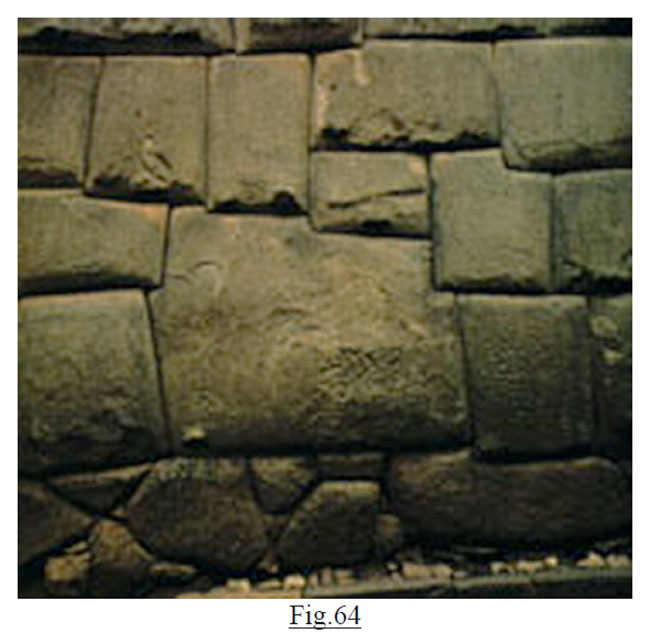 Presumably, if they were hewn and then placed in the walls, the process would also have been repeated many times over for each block for fine adjustments to be made to the angles in order to reach the absolute precision obtained in every block. Such a method is not only implausible but is nothing short of impossible and so it stands to reason that the obvious and somewhat disturbing explanation is that the joining edges, quite simply, were not cut in any conventional sense. It is known that the stones were in fact quarried and transported to the site for the quarries they came from have been located. But how were they worked to such perfection and then transported to the site which is located 13,000 feet (four kilometers) above sea level and how were the joints perfected? When one looks at these Mayan structures they certainly do have the appearance of a wall that is made of clay that has solidified. Again, take the wall at Sacsayhuaman (fig.65); it seems enormously strange, and also highly unlikely, for the builders to have gone to such incredible trouble to make sure the stones fitted together with what is an absolutely ridiculous degree of perfection, while using the most difficult shapes imaginable, only then to leave the visible face of the wall virtually covered with a myriad of imperfections that makes them look rough and unfinished.
Presumably, if they were hewn and then placed in the walls, the process would also have been repeated many times over for each block for fine adjustments to be made to the angles in order to reach the absolute precision obtained in every block. Such a method is not only implausible but is nothing short of impossible and so it stands to reason that the obvious and somewhat disturbing explanation is that the joining edges, quite simply, were not cut in any conventional sense. It is known that the stones were in fact quarried and transported to the site for the quarries they came from have been located. But how were they worked to such perfection and then transported to the site which is located 13,000 feet (four kilometers) above sea level and how were the joints perfected? When one looks at these Mayan structures they certainly do have the appearance of a wall that is made of clay that has solidified. Again, take the wall at Sacsayhuaman (fig.65); it seems enormously strange, and also highly unlikely, for the builders to have gone to such incredible trouble to make sure the stones fitted together with what is an absolutely ridiculous degree of perfection, while using the most difficult shapes imaginable, only then to leave the visible face of the wall virtually covered with a myriad of imperfections that makes them look rough and unfinished.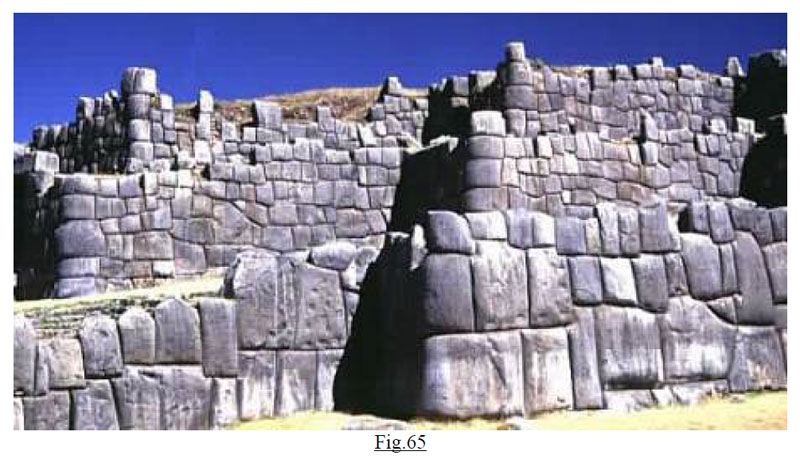 To be honest, that is an interesting enough point in itself. But what does an even closer examination of some of these imperfections on the walls produce?
To be honest, that is an interesting enough point in itself. But what does an even closer examination of some of these imperfections on the walls produce?
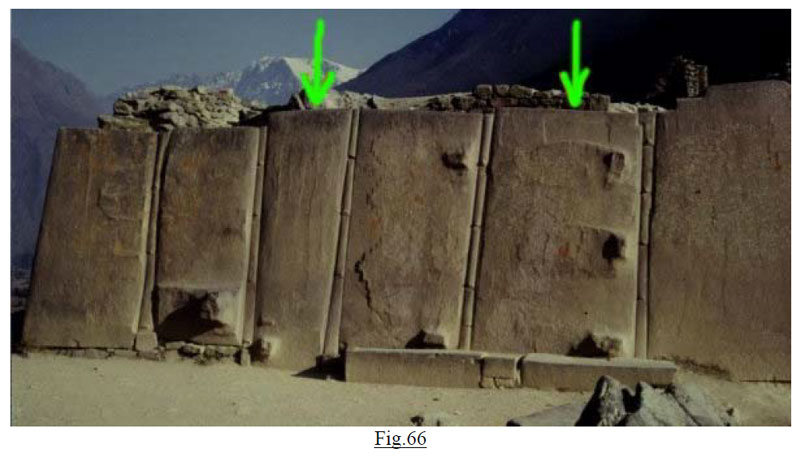 There is a section of a great wall at Ollantaytambo, Peru (fig.66) that has some highly unusual and very tell-tale markings on it. Notice the flat section near the top of the stone marked on the right and the long scrape marks on the stone marked on the left? These marks simply don’t look as if they have been purposely carved onto the walls in any way at all. Another section of the Sacsayhuaman wall (fig.67) that bears a number of strange scrape marks and dents on its surface look very much like tool marks. Interestingly, if you prod a lump of soft clay or cement with the end of a stick and let it dry, you can create marks and dents that look just like these.
There is a section of a great wall at Ollantaytambo, Peru (fig.66) that has some highly unusual and very tell-tale markings on it. Notice the flat section near the top of the stone marked on the right and the long scrape marks on the stone marked on the left? These marks simply don’t look as if they have been purposely carved onto the walls in any way at all. Another section of the Sacsayhuaman wall (fig.67) that bears a number of strange scrape marks and dents on its surface look very much like tool marks. Interestingly, if you prod a lump of soft clay or cement with the end of a stick and let it dry, you can create marks and dents that look just like these.
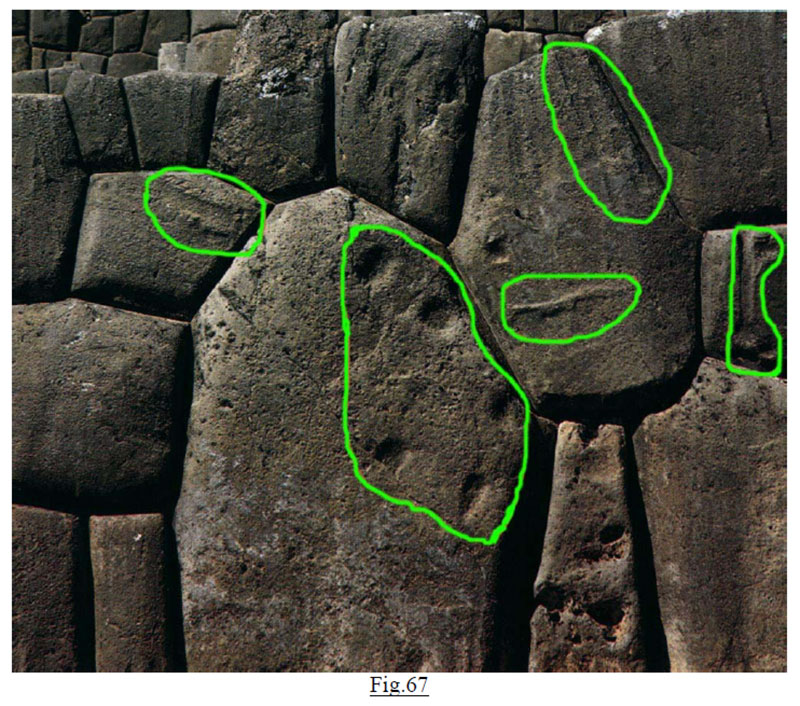 The stonework at Ollantaytambo is nothing less than spectacular and not by using all our advanced laser and computer systems combined nor by gathering all the technology we could muster, could we begin to come even close to achieving what has been done in the construction of these jungle megaliths of ancient times. Softening the stones seems to be the only logical explanation of how these walls were built. It’s the only thing that can adequately explain the precision fit of the stones which would then naturally settle snuggly together under their own weight easily creating a perfect and gapless joint.
The stonework at Ollantaytambo is nothing less than spectacular and not by using all our advanced laser and computer systems combined nor by gathering all the technology we could muster, could we begin to come even close to achieving what has been done in the construction of these jungle megaliths of ancient times. Softening the stones seems to be the only logical explanation of how these walls were built. It’s the only thing that can adequately explain the precision fit of the stones which would then naturally settle snuggly together under their own weight easily creating a perfect and gapless joint.
On another section of the walls at Ollantaytambo we can notice the small plugs protruding from the bottom of each small filling stone between the larger ones such as you might see used to provide stability in concrete form work? (fig.69). It is commonly believed that the protrusions found on the stones in these walls were used to hang gold plating or for tying ropes to for handling. Unfortunately for both of these theories, the protrusions are of completely insufficient size or shape and are too randomly placed to be effective for either of those uses.
They could however, be formed by making marks in the support structure. And interestingly, when working with a substance of such great weight, such protrusions would in fact, actually be necessary to prevent any uncontrolled movement of the heavy and wet material on the outer face of the wall while it solidified.
No one has adequately explained how the people of ancient times built these structures, or even why on earth they would have thought it necessary to go to so much trouble. All we know is that they did, because the structures are there and still defying our analysis. Archaeological and documented evidence suggests the actual builders of these incredible megalithic fortresses may in fact date back to a period far before the Mayans inhabited the area to when the dominant race was the Olmecs. There is also further evidence to suggest that the actual purpose of these structures may have been vastly more profound than simply temples or fortresses.
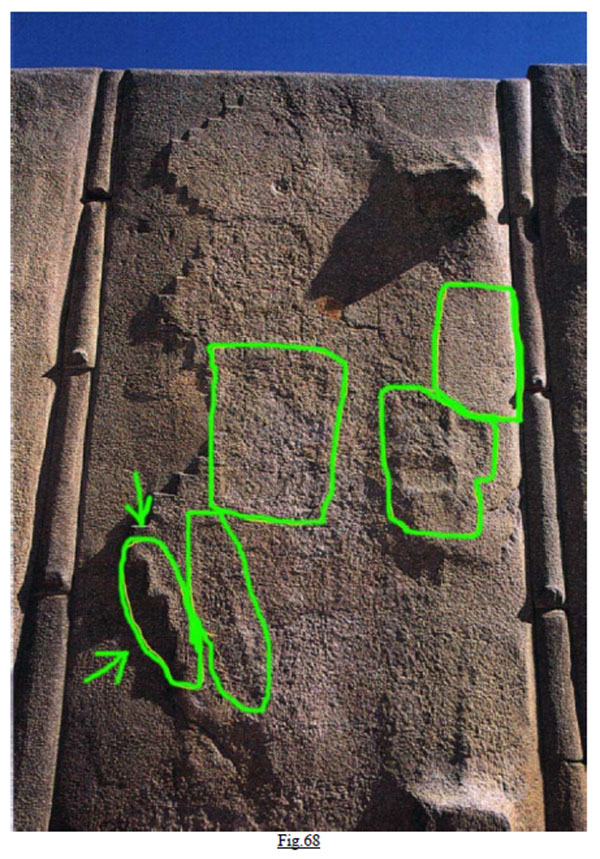 This is a particularly enigmatic stone from the Ollantaytambo wall (fig.68). Although the surface of the stone is quite rough and could very well have been hewn, it is very difficult to explain the zigzagging pattern on the face of the stone.
This is a particularly enigmatic stone from the Ollantaytambo wall (fig.68). Although the surface of the stone is quite rough and could very well have been hewn, it is very difficult to explain the zigzagging pattern on the face of the stone.
While it is true that the ‘stairway’ pattern is a motif common to many Mayan structures, notice how the bottom section of the lower zigzag appears to have protruded slightly and sagged a little. It seems quite unlikely and somewhat unreasonable to think that something like this would have been purposely carved onto the surface of the wall? Other sections look as if they have been slapped with blocks or prodded with the end of sticks while the material was still soft and just look at the narrow ‘filler’ stones between the large slabs.
It is obvious that the ancients actually did know of a way to soften stone. It seems to be the only thing that fits. How else could it have been done?
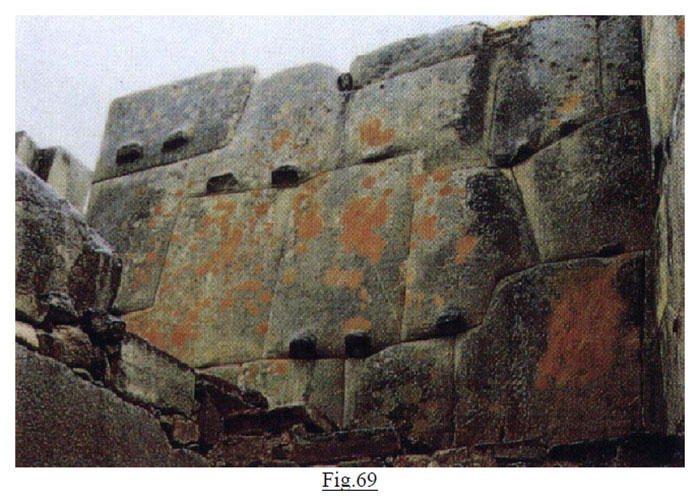 Local legends repeatedly maintain that the walls were erected by giants, gods who raised the stones in a single night. Legends also tell of how the edges of the stones would be rubbed with the juice of a special plant which would soften the stone like clay and thus perfect the joint.
Local legends repeatedly maintain that the walls were erected by giants, gods who raised the stones in a single night. Legends also tell of how the edges of the stones would be rubbed with the juice of a special plant which would soften the stone like clay and thus perfect the joint.
To think that simply because we have not yet located the small crimson plant Fawcett spoke of in the myriad of unknown species that have yet to be discovered in the Amazon jungle certainly does not mean that such a plant does not exist. To rule something out completely because it has not been found yet would be nothing short of foolhardy, with such an attitude we would never have discovered electricity, that’s a given.
One of the more unfortunate things in the dilemma though, is that time is fast running out. We may now never find any such plant. Not now that the main Amazon basin has been ruined by American oil interests and the remaining forests are still being destroyed at the rate of at least three football fields a day. It’s almost like they’re trying to make sure all evidence of such a thing is destroyed. But then, one should never attribute an action to malice when it can be adequately explained by stupidity. Though, when one is considering the actions, motives and attitudes of modern governments, unfortunately it’s usually the former. Such a plant may have already become a victim of industry, lost forever in the technological crunch.
But then, thanks to a remarkable man, we may not need to find it…
Recent discoveries and work by a Dr. Joseph Davidovits of the Geopolymer Institute have produced some remarkable insights into the processes the ancients may well have used to construct these amazing fortresses.
Softening Stone with Plant Extracts
Amazingly, a recent ethnological discovery has actually shown that some witch-doctors of the HUANKA tradition remarkably use no tools in the making of small stone objects, but in fact still use a chemical solution made from plant extracts to actually soften the stone material!
According to Dr. Davidovits, in a paper that was written by Dr. Davidovits, A. Bonnett and A.M. Marriote and presented at the 21st International Symposium for Archaeometry at Brookhaven National Laboratory in New York, USA in 1981:
“The starting stone material (silicate or silico-aluminate) is dissolved by the organic extracts, and the viscous slurry is then poured into a mold where it hardens. This technique, when mastered, allows a sort of cement to be made by dissolving rocks; statues which could have been made by the technique of the pre-incan HUANKA, by dissolution followed by geopolymeric agglomeration, and are found to contain Ca-oxalate in the stone.”
The trio then proposed the hypothesis that the large stones found in the Mayan Fortresses and monuments were in reality, artificial and had in fact been agglomerated with a binder after certain rocks had been slowly disaggregated, an idea that fits very well with what the walls look like and also happens to be in total agreement with local legends and traditions such as those that were told to Fawcett.
The group then even went on to present to the meeting some actual samples of stone that had dissolved and re-aggregated themselves to prove it!
“We present here the first results on plant extracts, on the dissolution or dis-aggregation of calcium carbonate containing rocks (bio-tooling action). The feasibility of chemically working calcium carbonate with various carboxylic acids found in plants (acetic, oxalic and citric acid) has been studied. Maximum bio-tooling action is obtained with a solution containing:
- Vinegar (1 M) (acetic acid)
- Oxalic acid (0.9 M)
- Citric acid (0.78 M)
“The great surprise was actually to discover very ancient references to their use since Neolithic times for working materials which are very hard but easily attacked by acids, such as chalk. Thus, a bas-relief from the tomb of Mera, at SAQQARAH (VI dynasty, 3 Millenium B.C., Egypt) shows the hollowing out of “Egyptian alabaster” (CaCO3) vases by a liquid contained in a water skin or bladder. An experiment of interest was to compare the ‘bio-tooling’ technique with the shaping of a hole using a steel tool and the quartz sand technique recommended by prehistorians. The hole resulting from sand abrasion has rough walls, whereas bio-tooling gives a smooth finish.”
The work by Dr. Davidovits is nothing short of brilliant and also very refreshing. It’s also interesting to note how quickly the problem was solved once the right approach to dealing with it had been adapted.
There is now very little doubt about how the Ancients actually built these incredible structures and indeed, softened or perhaps melting the stone has always really been the only possible explanation. The ancient Mayans were indeed quite capable of producing very large quantities of the acids that were used by Dr. Davidovits in his experiments from many plants that were quite common to the region in the distant past.
Plants such as: Fruits, Potatoes, Maize, Rhubarb, Rumex, Agave Americana, Opuntia, Ficus Indica and Garlic to name a few.
It is highly feasible that the stones were quarried, then broken or crushed to manageable sizes for transportation to the locations and re-aggregated on site while being cast back into the megalithic slabs we now see, after all, since we have seen that they certainly had and knew about the means to do it, it somehow seems absurd to think they would not have made use of this knowledge.
Once again, the simplest and most likely explanation is usually correct.
But all of this knowledge still does not answer the fundamental questions: Who actually built them and why?
Excerpt from Earth’s Forbidden Secrets – Part One
The Lost City of Z – Col. Percy Fawcett Docudrama
Posted in Other Topics, True History of Manwith comments disabled.




